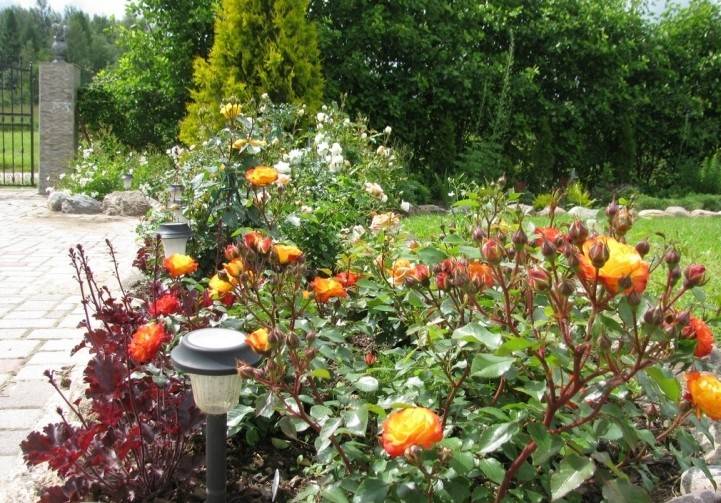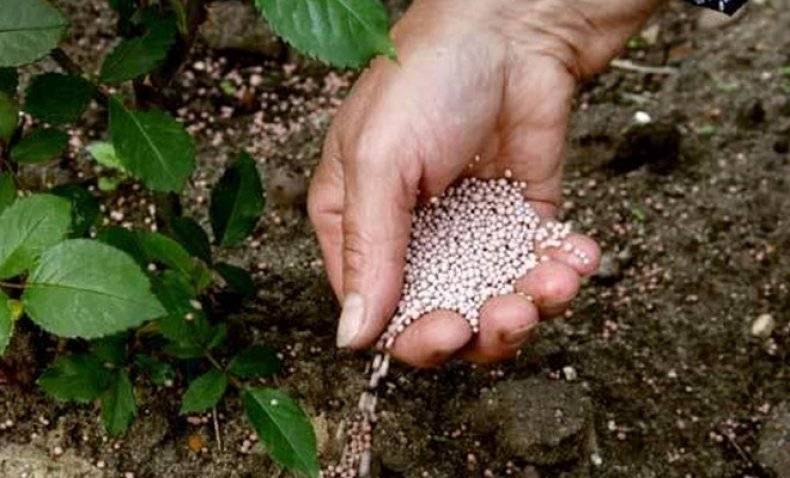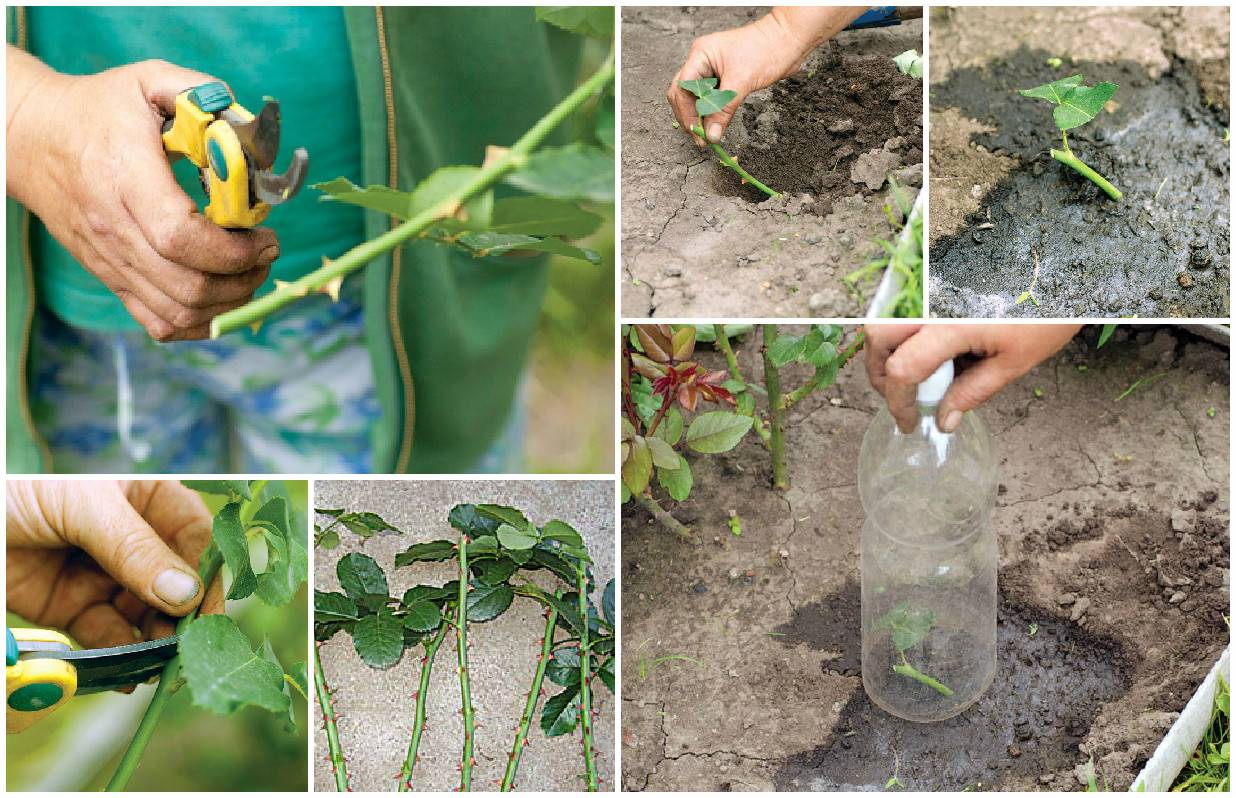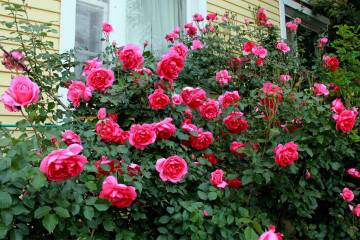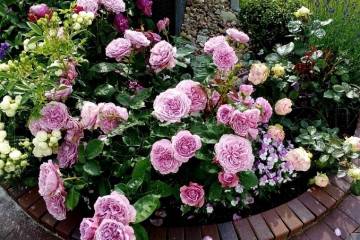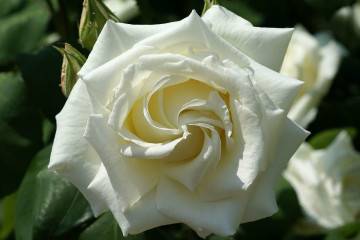Rose Rumba (Rumba) - characteristics of the claim
Content:
An unusually bright color, subtle aroma, long-term abundant flowering - these are far from all the advantages that the magnificent Rumba rose possesses. Like a Latin American dance, it ignites a passion for the possession of this fiery flower in the gardener's heart.
Plant characteristic
This variety is obtained by crossing tea and polyanthus types of roses. The history of the flower is connected with the name of the Danish breeder Svend Poulsen, the founder of the famous company Poulsen Roser and the creator of a new garden group of floribund roses.
Description of the bush
It grows up to 1-1.5 meters in height and up to 0.5 meters in width. Shoots are numerous, with dark green sharp leaves. Spines are poorly developed, not sharp. At the top, inflorescences of 3-15 buds are formed.
Rumba floribunda has a cheerful, cheerful color. The flower is characterized by a light pleasant aroma and a change in shades during flowering: from bright yellow with orange tips at the beginning of flowering to cream with raspberry around the edges at the end. The diameter of the rose is 5-7 cm.
Advantages and disadvantages
Rumba has several advantages:
- catchy unusual coloring;
- continuous profuse flowering all season;
- compact bush shape;
- wide application in landscape design.
There are also disadvantages:
- does not tolerate frosts more than -23 degrees and frequent rains;
- susceptible to diseases of powdery mildew and black spot;
- requires preventive measures to protect against disease.
Application in landscape design
The plant is popular in countries with warm and temperate climates. Due to its catchiness, it immediately attracts attention. Rumba looks spectacular both in flower arrangements and alone. It is used to revitalize lawns, curbs, garden paths. It goes well in compositions with conifers. Its variety of climbing rose Rumba Climing beautifully winds around arches, attics, summer arbors.
Growing a flower
Rumba grows well in lighted areas with light partial shade during the summer heat, without drafts and constant winds. The soil should be light, neutral or slightly acidic, well fertilized and permeable to moisture. The ideal option is sandstone. The soil is prepared in the fall. To reduce acidity, slaked lime is introduced into it before digging. For fertility - rotted manure, compost. A pit for spring planting is dug in the fall. Its depth and width must be at least 35 cm.
Selection and preparation of seedlings
Rumba propagates with the help of seedlings that have 3-4 shoots. They should be healthy, without being damaged by rot, mold, and the root should be branched, with developed lateral roots. Before planting, the root of the seedling is dipped in a clay mash for 30 minutes to stimulate growth.
The ideal time for planting Rumba is late April-early May or autumn - a month before the onset of frost, so that the plant gets stronger and gets ready for the cold weather.
The process itself consists of the following steps:
- The hole is equipped with a drainage of gravel, small stones, brick fragments.
- Pour in half a bucket of water, then pour a layer of soil mixed with 1 kg of humus, 1 tablespoon of mineral fertilizer for roses.
- The root is gently straightened and placed in a hole so that the root collar is 4-5 cm below the soil level.
- The remaining soil is poured into the hole, lightly tamped, watered, mulched with peat.
Seedling care
The care consists of traditional agronomic procedures: watering, loosening the soil, feeding, pruning, preparing for winter. During dry periods, Rumba is watered 1-2 times a week. If it rains regularly, watering is reduced or stopped altogether. The next day after watering, the soil around the bush is loosened, weeds are removed, and mulched.
Top dressing
If the rose is planted according to all the rules, the soil under the bush is fertilized only in the second year of growth. To do this, use rotted mullein, chicken droppings, compost, ash, superphosphate, special fertilizers for roses.
The ingredients are mixed in the right proportion and applied under the bush 2 times a year: in the spring during the growth and formation of buds and in the fall before wintering.
Pruning and preparing for winter
In dry weather, using a sharp pruner, cut the shoot 5 mm above the last left external bud. Apply short, long and combined pruning of bushes:
- short - 3-4 buds are left on the shoot from the soil surface;
- long - to form a tall, spreading bush, from 8 to 15 buds are left on each shoot;
- combined - to form a lush bush, short and long pruning is carried out at the same time.
In the spring, when the buds swell, dry and frozen shoots are removed at the root, the bush is thinned out, leaving 4-5 live branches and giving it a shape. In the summer, wilted inflorescences and diseased shoots are regularly cut off. In the fall, weak shoots are removed, the rest are shortened under the covering material. They are treated with antifungal drugs for diseases.
In climates with mild winters, Rumba is not sheltered. At frosts of -5 degrees and below, the bush is sprinkled with leaves, spruce branches, wrapped with agrofibre, burlap.
Bloom
During the season, Rumba blooms 2 times: 1st period - end of May-June, 2nd period - July-August. The rest period is short and not striking, since the flowers are constantly replacing each other.
Lack of colors
In the first year of the bush's development, this is normal for Rumba. Otherwise, you need to establish the cause and solve the problem:
| Cause | Decision |
| Poor landing site (little sun, lots of drafts) | Transplant the bush, remove the shadow |
| Impoverished soil | Apply top dressing |
| Cutting the bush too short | Allow the bush to develop |
Reproduction
The main breeding method is cuttings. In May-June, a strong lignified shoot is chosen, divided into cuttings 9 cm long. The lower cut is made at an angle of 45 degrees, and the upper one - 90 degrees and 0.5 cm above the extreme bud.
The lower part of the cuttings is freed from the leaves and half deepened into the ground. A distance of 15-20 cm is left between the cuttings. They are covered with polyethylene, transparent plastic, regularly ventilated and watered.
Diseases and pests
The main protection against diseases and pests is timely prevention, especially in spring and autumn.
If the buds and leaves are covered with a white coating, it is powdery mildew. Orange pads on stems and leaves - rust. Black round spots on the leaves - black spot.In such cases, the diseased areas are cut off, the plant is treated with copper sulfate, Bordeaux mixture, antifungal fungicides. Insecticides help from leafworms, gall mites, aphids.
Compliance with the rules of planting and caring for Rumba will help to decorate the site with one of the most spectacular varieties of the queen of flowers. For many years she will give a good mood to everyone around her.

